Monday, May 30, 2011
Aji Dam Garden Rajkot
What to Buy in Rajkot
Beaches in Gujarat
Beaches in Gujarat | ||
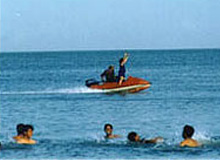 India boasts of a number of enthralling beaches and most of them dot the western coast of the country. Gujarat has a 1600 km long coastline and it is therefore of little wonder that there are a number of alluring beaches in the state that are a potential lure for the ardent beach lovers. Indianholiday.com provides you a handy guide to the beaches in Gujarat. |
Jampore Beach Daman
Jampore Beach Daman |
|
When it comes to the beaches in India, the alluring Goa beaches hog the entire spotlight. It’s high time that the focus is shifted to the scenic and picturesque Daman beaches. Located on the western coast of the Indian peninsula, Daman boasts of beaches that have a unique and irrefutable appeal to them. The Jampore Beach, Daman falls in the league of the most enchanting beaches in Daman. |
Sunday, May 29, 2011
Watson Museum and Library Rajkot
Watson Museum and Library Rajkot |
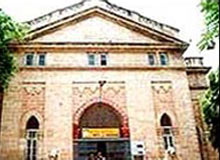 Watson Museum and Library, Rajkot is a famous museum in Rajkot. This museum is a major Tourist Attraction in Rajkot. Watson Museum and Library in Rajkot is located in the Jubilee Gardens in Rajkot. The Watson Museum and Library, Rajkot was opened to the public in the year 1888 and commemorates Colonel James Watson, who was Saurashtra’s political agent from year1886-89. The entrance of the Watson Museum and Library in Rajkot is well decorated and attractive. The two majestic lion’s statues stand on both the sides of the entrance of the museum. Watson museum in Rajkot is also used as a library. |
Jallandhar Beach Diu
Jallandhar Beach Diu |
|
The palm fringed beaches of Diu transports you to a fairytale land of sheer beauty and exotic ambience. There are many beaches around Diu Island, with Nagoa and Jallandhar being quite famous for its serene beauty. Both these beaches are south-east of Diu island. Eye catching Diu beaches attract tourists from all over the world. Indianholiday.com provides you all the requisite inputs on Jallandhar Beach, Diu. |
Chakratirth Beach Diu
Chakratirth Beach Diu |
|
|
Wildlife in Gujarat
Wildlife in Gujarat |
 The city of Bhuj was founded by a local ruler named Maharao Hamir in the year of 1510. Rao Khengarji I, Gujarat with its varied topography is a store house of biological diversity, and commands a myriad species of flora and fauna. In every nook and corner of this princely state, natural reserves abound, every bent of the road makes you hear the call of the wild. Acres and acres of deciduous forests, grasslands, marshy swamps - all combine to contribute to the rich Wildlife in Gujarat. |
Forts and Monuments in Gandhinagar
Forts and Monuments in Gandhinagar |
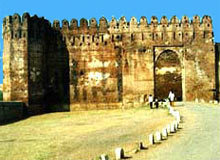 The forts and monuments in Gandhinagar stand as edifices which portrays architectural brilliance. The forts and monuments at Gandhinagar are major tourist attractions in Gandhinagar. Many tourists come to Gandhinagar to visit the forts and monuments of Gandhinagar as they bear great cultural and historical significance. Gandhinagar in Gujarat has evolved as an important historical and political center and the forts and monuments of the place remains stands as a proof of the historical aura that the place bore. The historical background of a place is defined to a certain extent by the forts and the monuments present in a place.
|
Gardens in Gandhinagar
Gardens in Gandhinagar |
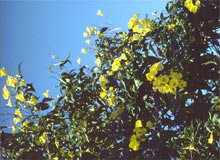 The Gardens in Gandhinagar are some of the important Tourist Attraction in Gandhinagar in Gujarat. The Gardens of Gandhinagar adds beauty to the city. The city of Gandhinagar is planned in such a way that the city has enough spaces left for gardens and parks to come up. The city has been planned to accommodate many gardens and parks that stands as places where people can go and spend a nice time with their friends and families. |
Holy Places in Somnath
Holy Places in Somnath |
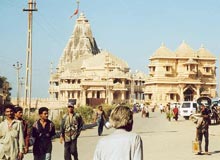 Introduction Introduction The holy town of Somanth located on the shores of Arabian Sea, is one of the most important pilgrim centers in India. This sleepy town lies close to Vereval where most of the leisure travelers and pilgrim puts up when they are visiting Somnath as it offers you a wide range of accommodation. The famous Somnath temple is situated here and is believed to have been plundered 6 times by Mahmud of Ghazni who raided the temple and took away its treasures to his homeland. According to Hindu mythology this is also the place where Lord Krishna was shot in the leg. The number of historical, mythical and religious associations with the Holy Places in Somnath makes it more attractive to the tourists. References of this ancient city can be found in many of the early Indian texts. It was said that the Aryans took shelter over here before moving further in the South of the subcontinent. Somnath earns much of its claim to fame from the erstwhile Somnath Temple which is believed to house one of the twelve Shiv jyotirlingas. It is one of the most sought after Holy Places in Somnath. The legend associated with it is quite interesting. Supposedly it was built by the moon god or Soma in agreement to the curse that king Daksha put on him. As the legend goes he is said to have been cursed by Daksha with whose daughters he was binded by holy wedlock. However he loved his wife Rohini the most and ignored Daksha’s other daughters. Due to the curse the moon began to fade and Daksha advised Soma to visit the Prabhas to get rid of the curse. Somnath etymologically mean the Lord of the moon. Another fact that is associated with Somnath Temple is the number of times it was rebuilt and besieged. Soma built it in gold. It was rebuilt in silver by Ravana. Again Lord Krishna built it in wood and later it was again built in stone by Bhima one of the Pandava brothers. |
Bhalka Tirth Somnath
Bhalka Tirth Somnath |
|
|
Suraj Mandir Somnath
Suraj Mandir Somnath |
|
|
Tours to Sasangir
Tours to Sasangir
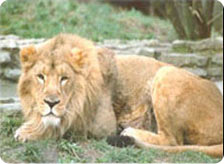 It is highly unlikely that those planning a tour to Gujarat will leave out Sasangir. Tour to Sasangir is a thrilling idea. It will take you to a place that is the only place outside Africa that serves as a natural habitat for the lions. Sasangir covers a distance of about 1424 square kilometers, Sasangir is a place that would generate interest in wildlife enthusiasts and bird lovers. Indianholiday.com is you one stop guide that provides you with all the useful info on your tour to Sasangir. | ||
The best time for touring Sasangir is mid-October to mid-June. The sanctuary remains open to the visitors during this time. If you plan your tour to Sasangir during the monsoons, you forgo the pleasure of visiting the sanctuary that remains closed during this period. Besides the sanctuary, the other popular places of tourist attraction that one can explore during one’s tour to Sasangir comprise of the quaint temples like Kankai Mata and Tulsishyam. Despite their antiquity, the temples are held in great reverence till now. | ||
Saturday, May 28, 2011
Tours to Zainabad
Tours to Zainabad
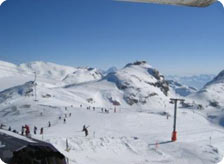 You must visit the beautiful city of Zainabad. It is situated around 50 kms from Modhera and 95 kms from Ahmedabad. It is a very small yet picturesque town sitting on the fringes of the Little Rann of Kutch. On a tour to Zainabad you will come across different and interesting sightseeing spots. However the one that has brought it immense fame is the Wild Ass Sanctuary. You must come to this sanctuary first. In this sanctuary you will catch the glimpses of exotic wildlife and bird population. To your delight, the sight of the rare Asiatic Wild Ass and the endangered Hubara Bustard will make your day. | |
| Known for refined cultural heritage and considered to be the ideal base to discover the charisma of the Little Rann of Kutch, Zainabad is all about fun and excitement. You will also vouch for the same after taking a tour to Zainabad. Apart from enjoying the sights of the exotic wildlife you can also take part in several activities. You can opt for camel and jeep safaris. Or to experience thrilling fun you can take time out for bird watching. | |
Tours to Gondal
Tours to Gondal
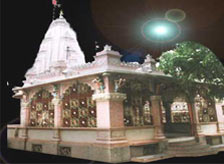 To see the most beautiful and quaint part of Gujarat you are advised to embark upon a tour to Gondal. It is located on the tranquil banks of the river Gondali at a distance of 60 from the district headquarter of Junagadh and 39 km from the ancient city of Rajkot. The imposing sites in the Gondal city are a visual delight not only to eyes but to soul as well. | |
| A tour to Gondal will acquaint you with the foresightedness of the great ruler called Sir Bhagwatsinghji. He not only brought social reforms in the town but also ensured that this place moved ahead with time. It is said that his rich educational background and regular trips to Europe blessed him with fresh and innovative ideas and that in turn paved the way for the development of the city of Gondal. On your travel to Gondal you will come across several beautiful forts and palaces. Navlakha Palace in Gondal is touted to be the oldest and the most mesmerizing palace. It is located on the serene river banks and scales up to 30 m in height above the river bed. Built in 17th century, this colossal palace is an architectural marvel that still impresses its onlookers and leaves them completely dumbstruck. The tour to Gondal will become more exciting on moving towards the other two palaces namely Riverside Palace and the Orchard Palace. The Riverside Palace is situated on the border of the river Gondali. It was built in 1875 AD by Maharajah Bhagwatsinghji for his son Yuvraj Bhojraji. Today these palaces are converted into heritage homes and serve as a base for those who want to stay in this place for a while. On Gondal tour you will be delighted to see the vintage cars in the ancient garages. These are one of the most important and unique tourist attractions in the city. You should also visit Swami Narayan Temple, Bhavaneshwari Temple, Ayurvedic pharmacy and the stud farm of Kathiawadi horses here. This apart, you will enjoy bird watching in this quaint town. The mesmerizing sights of peacocks, tree pies, cuckoo, sunbird and bee-eaters will make your day. | |
Tours to Uteliya
Tours to Uteliya
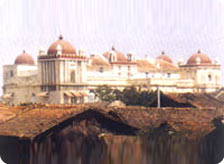 Tour to Uteliya will take you to a wonderful journey to the Uteliya village of picturesque simplicity, located a few hours away from Ahmedabad, in the state of Gujarat. A superb past hidden in the imposing monuments or spectacular landscape does not exist in Uteliya. Relatively the unremarkable rustic nature of the little village itself is most significant of the tourist attractions in Uteliya. Traditional houses, diamond polishing, temples, hot springs and the typical ambiance of an Indian village will make your Uteliya tour fascinating. Agricultural countryside (cotton and wheat fields) and Bharwad hamlets around Utelia are worth visiting. Indianholiday.com provides you with comprehensive inputs on traveling to Uteliya. | |
| There are not many tourist attractions in Uteliya. The splendid Uteliya Palace is redolent of the glorious past. The erstwhile palace is the focal point of the village. The architecture features a unique combination of the Indo-Saracenic and the European style. Domes, balconies, pillared galleries, and porticos combine with Gujarati haveli style frontals to form a fantastic structure. The high podium, entrance archway, beautiful chandeliers, row of columns, twining staircase, and portraits retains the perfect old-world charm. | |
GARDEN PALACE
| The Garden palace is a set of fine gardens, agricultural fields and orchards. Nawab Saheb Manovar Khanji Babi built it in 1883. The Garden Palace serves meal in a typical Nawabi period ambience; made from homegrown vegetables, milk from the palace dairy and chicken from its poultry. |
|
Tours to Veraval
Tours to Veraval
|
Diu is no doubt a charming and idyllic place to pack your bags and head for on your vacation, but if you are planning a holiday in Diu, don't miss out on paying visits to the nearby places of interests both within and around Diu. Besides the tourist attractions that Diu boasts of, one can also embark on excursions from Diu that promises to be thrilling and exhilarating. Delwada and Veraval are most commonly visited places. Indianholidays.com is a treasure trove of needful info on tour to Veraval. | |
Touring Veraval remains inconclusive without paying a visit to this magnificent temple that has found mention in the records of Al Baruni, the Arab traveler. In fact the temple was so glorified by Al Baruni that it prompted Mahmud of Ghazni to come to the place. The Somnath Temple is counted among the twelve sacred shrines dedicated to Lord Shiva. At present, there is a museum within the temple compound that showcases the relics associated with the old temple. Other popular tourist places that you should not miss visiting include the Junagadh Gate and the Bhalka Tirth where Lord Krishna was shot with an arrow by a hunter who mistook him for a deer. | |
Dwarkadhish Temple.
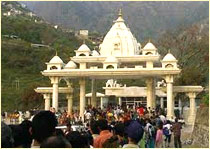
Ornate, exquisite and majestic, Dwarkadhish Temple (Jagat Mandir) is one of the most imposing five- storied structures of Hindu architecture in Gujarat on the confluence of river Gomti and Arabian sea. The five-storey high temple is built on seventy-two pillars. The temple spire is 78.3m high. From the temple dome waves an eighty-four foot long multicolored flag decorated with the symbols of the sun and moon. Lord Krishna's grandson, Vajranabha, is said to have built the original temple of Dwarkadhish over the hari-griha (Lord Krishna's residential place).
The sanctum of the temple is formed by the Jagat Mandir, or Nija Mandir, which dates back at least 2500 years. The Jagat Mandir has a tall tower and a hall of audience. There are two entrances to the temple. The main entrance (north entrance) is called "Moksha Dwara" (Door to Salvation). This entrance leads to the main market. The south entrance is called "Swarga Dwara" (Gate to Heaven). Outside this doorway are 56 steps that lead to the Gomati River.
RAJWANT PALACE
| The Rajwant Palace Resort is a part of the 7 acre Vijayraj palace complex constructed for Maharajah Vijay Singhji in 1915. The palace resembles a typical European mansion, with its Romanesque dome, classical columns, Greek capitals, and Venetian doors, Gothic arches. The interiors are appointed in original period furniture. A few rooms of the palace are set aside for a museum of trophies, stuffed animals, mirrors, portraits, textiles, glass and ceramics. |
|
DARBARGADH POSHINA PALACE
| The rulers of Poshina were descendants of the Chalukyas, who ruled much of Gujarat and Central India in the 12 th century. The Darbargadh was once the pride of the Chalukya dynasty. This palace has huge gateways, a massive dome, numerous pillars and arches. It offers pleasant courtyards, gardens, lawns, shady trees and terraces with views of the Arravalli mountains. Ancient fort walls and the old prison are reminders of the property?s history. |
|
Friday, May 27, 2011
| The Royal Oasis and the Residency are located in the erstwhile princely state of Wankaner. The palace is a stupendous work of Venetian-Gothic architecture in an oriental vein, with arches, balconies, marble biradaris and pillared porticoes. The interiors are equally delightful in their profusion of Italian marble, stained glass windows, European chandeliers, French crystal, Belgian glass, Burma teak furniture, Persian rugs, custom woven Mirzapur carpets, magnificent drawing room. |
|
RAJ MAHAL PALACE
| The Rajmahal Palace was built in the 19th century by HH Bal Sinhji and was earlier called Bal Vilas Palace. It is located in 13-14 acres of park-like grounds with tennis courts, lily ponds, fountains, out houses and cricket pitches. The centerpiece is a beautiful pillared courtyard with marble statues. There is a marvelously appointed Darbarhall with painted ceilings, king-sized portraits and a throne. There are beautifully restored vintage cars and a library of automobile books. |
|
NILAMBAGH PALACE
| Set among 40,000 feet of luxuriant lawn, groves and gardens, the Nilambagh was built in 1895/6 by William Emerson. The entrance is a pillared porch with Gothic arches and an austere period piece reception counter that opens onto a lobby of sofas, exotically colored carpets, life-size portraits, antique furniture, stuffed leopards and mounted trophies. From here one enters a paved courtyard, surrounding a fountained pleasure pool, around which the palace was erected. |
|
ROYAL OASIS
| The Royal Oasis and the Residency are located in the erstwhile princely state of Wankaner. The palace is a stupendous work of Venetian-Gothic architecture in an oriental vein, with arches, balconies, marble biradaris and pillared porticoes. The interiors are equally delightful in their profusion of Italian marble, stained glass windows, European chandeliers, French crystal, Belgian glass, Burma teak furniture, Persian rugs, custom woven Mirzapur carpets, magnificent drawing room. |
|
ambhira parshvnath bhagwan,Gambhu
Shree Gambhu jain tirth is oldest and famous tirtha of Gujarat.This tirth suited in middle of the Gambhu village.Prachin litreture of jain”Gambhira” or “Gambhuta” ancient name here.it’s two munjal shilpkam building of jainalaya. There was a time when Gambhu was the central place of Jainas. It was again the capital in the midst of a group of 144 villages. Gambhu village is many temple of devi-devta The history of the village is stated to go to as early as the ninth century of the Vikrama era. The village is earlier in its existence than Patan prabhat nagri.this village proof is 1140 maharaj karnaraja tampatra and 1156 maharaja shree siddhraj jayshih tamptra so gambhira nagari is very prachin.
 History of Gambhira Parshvnath Bhagwan:-
History of Gambhira Parshvnath Bhagwan:-
The idol of Shree Gambhira Parshvanath Bhagavan is considered to be of times of king Samprati.Gambhira is a main nagar of 144 village.Mantri vimal ray Purvaj is ninasheth here suited in first to order the kuldevi mata.patan first citizen of ninasheth son lahirsheth and prapotra vimalsha sheth original citizen of this village its produfus.. In V.S. 919 Acharya Shri Shilankacharya wrote a commentary on the “Acharanga Sutra”. The ancient work “Sushruta” was composed here.there are many worked like “shusrut grunth” and “sharavk pratikraman shutra”.the gambhira pashvnath bagvan chamtkar aneka in people asked one chamtkar is daily bagvan hand in silver coin collect. This silver coin are collected in temple pujari in morning but one day pujari was late in temple To Puja and other person(village man) early morning the temple and collected in silver coin. Then next day Pashvnath bagvan hand is empty way so all village people are Information to This chamatkar And proof in v.s 1823 to write a novel is “prabhavi pashvnath chamtkaro” writted by shree manilal naynchand Another write book is “purisadani shree pashvnath” by sarabahi navab.This jain temple second munjal have a two bhoyra(turnal) one have a modhera sun temple and second is patan.modhera sun temple and patan turnal are connected this turnal.
The Murti Profile is to Nearly 46 cms. high, white – colored idol of Bhagawan Gambhira Parshvanath in the Padmasana posture.in Gambhu village And the Last 5 year this tirth famous and popular.Everyday lot’s of jain Sadhu and people Are visit this temple so wel-come to visit this place it’s my Village Temple.
How to Reach This Temple:-
Gambhu Jain Temple Nearest bus stop is mehsana just 25 k.m and also Railway station. You can way from modhera chokdi via modhera sun temple Road,via Nugar,Ranela village and Ganeshpura Village stop and Turn to Gambhu Village just 3 k.m..you have visit this Temple and any dificulty plz E-mail ya comment it.
Address :- Shri Gambhu Jain swetmbar Murtipujak Sangh Trust, P.O= 384 011, At=Gamhbu, Taluko= Becharaji, Dist.=Mehsana State=Gujarat,India, Phone Number=02734 282325
Ambaji Ambe Mataji
Ambaji Ambe Mataji
 During the Treta yuga powerful and evil forces had taken control of the world. The combined cries of devotees inspired a divine solution. Mahalakshmi, Mahakali and Mahasaraswati combined their shanti’s (powers) to produce a Devi powerful enough to free the people of their suffering. That powerful Goddess that they produced is Vaishno Devi.
During the Treta yuga powerful and evil forces had taken control of the world. The combined cries of devotees inspired a divine solution. Mahalakshmi, Mahakali and Mahasaraswati combined their shanti’s (powers) to produce a Devi powerful enough to free the people of their suffering. That powerful Goddess that they produced is Vaishno Devi.
Vaishno Mata quickly disposed of an evil demon who was preventing devotees from their religious practices. She took a birth in South India so that She could continue with Her divine mission here on earth. After some time She left home to perform austerities and meditate on Lord Rama. At that time Lord Rama was searching for his wife Sita who had been abducted by the evil Ravana. Rama appeared before Vaishno Devi. She asked to be his wife. Rama refused saying that he was already married but if Vaishno Devi could recognize him when he returned next then he would agree to marry her.
After killing Ravana and rescuing Sita Rama returned to Vaishno Devi’s hermitage disguised as an old sadhu. To her disappointment Vaishno Devi did not recognize him. He consoled her saying that he would again take a birth in Kali Yuga (the present age) and then they would get married. Lord Rama told Vaishno Devi to stay in a cave in the Trikuta hills where Mahakali, Mahalakshmi and Mahasaraswati were staying. There many devotees would come for Her darshan and she would fulfill their desires. He also sent Hanuman to serve Her. Since that time Vaishno Devi has been there, serving the world, and waiting for Lord Rama to return.
High court of Kungher,Chudel Mata
High court of Kungher,Chudel Mata
High court of kungher:-
Kungher is very famous prilgrimage place which is ten(10) k.m away from patan . this godless has seatedas Adhshakti of kaliyuge as a splendid burning flame.this place has become the place of truast and faith. Many Devotees come on Sunday and Tuesday and feel relief after visioning this godless.
History of Chudel Maa:-
Raychandbahi Patel established the foundation of this temple on the southerer part of kungher.According to populartalle this goddes was worshipped as short(chudel) About 250 years ago. This goddles has given real judgement who had loot their pan,Buffoalo .Day by day People turted in this flame and turst spread at the tip of the village.
Due to inspiration of this goddless the distinguished persons marbal a place in 1991(2049 savant) from this time the burning flame is running.this palce become famous all over Gujarat during last two year.There is no place of district.there is no any Worshiper of this goddless and no one pffer to vow,no any Religious Promise.
They complaint themselves before this flame and get the Goddless justified so it’s named as the High court of kungher. Thousands of Pligrimages come and stand in a queke from Saturday to Sunday. The Management had arranged guad accommodation fer thom. There are teo different line for them.
This Goddes hates wine and addition no difference of caste in the temple.the here are make arrangement of tea Prasad and grain fer birds from the gifted money of prilgrimages.the trust has purchased some established bording house,inns,water hut,Prayer hall,Garden and Parking zone. For the people fer bright future.
Now,the trust has been thinking about the educational field for bravo mather you are talaijy aray the pain of people your flame live on Forever.i am visit this temple is many time…so very nice ….plz once time visit this mandir…
Nearest Another Famous Temple:-
Rani ki vav in patan just 10 k.m, chansma saibaba mandir 11 k.m,Modhera sun temple is 30 k.m becharaji bahuchar mata 42 k.m and unjha umiya maa is 34 k.m and many more…
How to Reach Kungher:-
The Nearest bus stand is kungher village. Another nearest bus stop is patan just 10 k.m,chansma is 11 k.m ,mehsana is 46 k.m and also Railway station.Airport is very long to this temple, so 120 k.m in ahmedabad airport.
Thursday, May 26, 2011
Myths associated with Bahuchara Mata:
Myths associated with Bahuchara Mata:
One important myth concerns a king who prayed before Bahuchara Mata to bring him a son. Bahuchara complied but  the prince Jetho, who was born to the king, was impotent. One night Bahuchara appeared to Jetho in a dream and ordered him to cut off his genitals, wear women’s clothes and become her servant. Bahuchara Mata identified impotent men and commanded them to do the same. If they refused, she punished them by arranging that during their next seven incarnations they would be born impotent. This is how the cult of Bahuchara Mata, whose devotees are required to self-castrate and remain celibate, developed. In one of the many folk stories associated with Bahuchara Mata, the goddess was once a princess who castrated her husband because he preferred going to the forest and “behaving as a woman” instead of coming to her bridal bed. In another story, a man who attempted to molest Bahuchara Mata was cursed with impotence. He was forgiven only after he gave up his masculinity, dressed as a woman, and worshipped the goddess.
the prince Jetho, who was born to the king, was impotent. One night Bahuchara appeared to Jetho in a dream and ordered him to cut off his genitals, wear women’s clothes and become her servant. Bahuchara Mata identified impotent men and commanded them to do the same. If they refused, she punished them by arranging that during their next seven incarnations they would be born impotent. This is how the cult of Bahuchara Mata, whose devotees are required to self-castrate and remain celibate, developed. In one of the many folk stories associated with Bahuchara Mata, the goddess was once a princess who castrated her husband because he preferred going to the forest and “behaving as a woman” instead of coming to her bridal bed. In another story, a man who attempted to molest Bahuchara Mata was cursed with impotence. He was forgiven only after he gave up his masculinity, dressed as a woman, and worshipped the goddess.
Temple:
The temple of Bahuchara Mata is located in Bechraji town in Mehsana district of Gujarat, India. It is 110 km from Ahmedabad and 35 km west of Mahesana. The original temple complex was built in year 1783 AD. The temple is nicely decorated with stone carving. Every year 1.5 million pilgrims visit this temple. Toda Mata (Bahuchara Mata) is located in Sankhalpur. The origin of Bahuchra Mata is situated at Varakhdiwala temple in Bechraji. Because Bhakta Vallabha Dhola wrote in his Aanand no Garbo the original place of Bahuchra Mata is situated at between Sankhalpur and Dedana village. The Toda Mata temple in Sankhalpur is 2 kilometers fare from Bechraji (Bahuchraji).
Shri Swaminarayan Mandir, Vadtal
Shri Swaminarayan Mandir, Vadtal
| Shri Swaminarayan Mandir, Vadtal | |
|---|---|
 The headquarters of the Shri Laxminarayan Dev Gaadi | |
| Name | |
| Location | |
| Location: | Vadtal |
| Architecture and culture | |
| Primary deity: | Laxminarayan Dev, Shri Ranchodraiji, Harikrishna Maharaj, Radhakrishna Dev, Shri Dharmadev, Bhaktimata and Vasudevji |
| History | |
| Date built: | 3rd of November 1824 |
| Creator: | Bhagwan Swaminarayan |
Shri Swaminarayan Mandir, Vadtal (Devnagari: श्री स्वमिनरयन मन्दिर, वद्ताल) headquarters of the Shri LaxmiNarayan Dev Gadi are located in this temple in Vadtal.[1][2] There are three main shrines in the temple the central shirne of this temple is that of Lakshmi Narayan. On the right there is an image of Radha Krishna with Swaminarayan in the form of Hari Krishna and the left has Vasudev, Dharma and Bhakti.[3]
History

The town of Vadtal is also known as Vadtal Swaminarayan. The temple here is in the shape of a lotus, with nine domes in the inner temple. The land for this shrine was donated by Joban Pagi, a dacoit converted into a devotee by Swaminarayan. The temple was constructed under the supervision of S.G. Brahmanand Swami.
Devotees from Vadtal had gone to Shreeji Maharaj on the day of Nirjala Ekadashi to meet him in Gadhada. On the next day - the twelfth day of the bright half of Jyestha - they requested to Swaminarayan to construct a Shri Krishna Mandir in Vadtal. Shreeji Maharaj commanded his disciple Brahmanand Swami to temporarily leave the construction of the Muli temple and proceed with a team of saints to plan and supervise the construction of a temple. The construction of this temple was completed within 15 months and the idols of Laxminarayan Dev were installed by Swaminarayan himself on the 3rd of November 1824, amidst chants of vedic hymns and devotional fervour of the installation ceremony. In the middle of the temple, he installed the idols of Laxminarayan dev and Ranchhodji. In the north, there are the idols of Dharmdev and Bhaktimata and his own form Harikrishna Maharaj. And in the south, Swaminarayan installed the idols of RadhaKrishna Dev and Harikrishna Maharaj.
Besides the Gods sitting in the central temple, in the south of the middle temple, were installed the form of Dakshinavart Shankh (Southern-sea conch) and Shaligrama (icon of Vishnu). In the inner dome, there are the stone-idols of the ten incarnations of god, besides the idols of Vishnu resting on the seat of Sheshnaag (heavenly snake).
Further information
The temple is the highest seat of the Acharya and preceptor of the dakshin desh (Laxminarayan Dev Gadi). On the south end of the main temple, there is a place called the Akshar Bhavan. Its first floor has standing idols of Ghanshyam Maharaj. On the second floor, there is the idol of Ghanshyam Maharaj in sitting posture. Personal objects of Swaminarayan are kept here. On the west there is a place called the Hari Mandap where Swaminarayan wrote the Shikshapatri.
Shri Swaminarayan Mandir, Gadhada
Shri Swaminarayan Mandir, Gadhada
| Shri Swaminarayan Mandir, Gadhada | |
|---|---|
 The temple at Gadhada | |
| Name | |
| Location | |
| Location: | Gadhada |
| Architecture and culture | |
| Primary deity: | Gopinathji Maharaj, HariKrishna Maharaj |
| History | |
| Date built: | October 9, 1828 |
| Creator: | Bhagwan Swaminarayan |
Shri Swaminarayan Mandir, Gadhada (Devnagari: श्री स्वमिनरयन मन्दिर, घडडा) is a Hindu temple in Gadhada. This Mandir was built by Swaminarayan himself.[1]
About this Mandir
The land for constructing this temple in Gadhada, was donated by the court of Dada Khachar in Gadhada. Dada Khachar and his family were devotees of Swaminarayan. The temple was made in the courtyard of his own residence.[2] The temple work was planned and executed directly under the consultation and guidance of Swaminarayan. Swaminarayan over viewed the construction in and also helped with the manual service in the construction of the temple, by lifting stones and mortar. This shrine has two stories and three domes. It is adorned with carvings. The temple is placed on a high plinth is a spacious square and has an assembly hall with large dharamshalas and kitchens for ascetics and pilgrims.[1]
Swaminarayan had installed the idols in this temple on the October 9, 1828 . Gopinath and Hari krishna in the middle, Dharma and Bhakti and Vasudeva on the western side and Revti-Baldevji, Shri Krishna and Suryanarayan in the eastern temple. KAUSHIK
Other information
Besides the idols installed by Swaminarayan himself, the temple is a place of many memories of Swaminarayan. On the path of the worship circuit of the inner temple, there is the idol of Ghanshyam facing northward. This prasadi temple has prasadi items of Swaminarayan displayed in a museum at the temple.
On the southern side of the temple, there is a big neem tree and the chamber of Vasudeva. Swaminarayan gave several discourses at that place. The court of Dada Khachar has been preserved in its original form.
On the backside, there is the Akshar Oradi temple and Gangajalio well. Lakshmi wadi (place of cremation of Swaminarayan) is situated a little away from the town. At Lakshmi wadi, a single dome temple has been constructed at the place of the funeral rituals of Swaminarayan's mortal remains. A little ahead, there is one canopy where Swaminarayan used to sit and deliver the discourses, and just a little ahead, there is the room of Nishkulanand Swami, where he placed the palanquin prepared by him for Swaminarayan's last journey. A neem tree faces this place, and on its western side, there is one more canopy where Swaminarayan celebrated ‘Sharadotsava’.
Swaminarayan and his saints used to take a bath in the River Ghelo.[1] This river flows in the south side of the temple. There are prasadi river-beds - Narayan Dharo and Sahasra Dharo which Swaminarayan visited frequently.[1] There are small temples of Neelkanth and Hanuman on the bank of the river.
virpur Jalaram Bapa
virpur Jalaram Bapa
“ Sorath Bhumi Pavan Dham,Virpur Naam Ema Gam. Pragatya Tya Shree Jalaram Jan sevanu Karva Kam”
The Virpur is a small village about 52 K.M from Rajkot.It is situated on National Highway No. 8b.This village had become holy after the birth of Shri Jalaram Bapa.It had become famous now all over the world due to events that had taken place in the life of Shri Jalaram Bapa.
Shri Jalaram Bapa’s Temple:-
Shri Jalaram Bapa is on the feet of God Shri Ram Chandra.This had enterance just on the Left side of the Big Gate of the “Dela”.The “JHOLI-DANDA” which is kept in the Transparent Cup-board and Shri Hanumanji’s Idol is also Placed near the “Samadhi”.Due to the “JHOLI-DANDA” only, it is possible to provide two times free PRASAD and TEA to the thousands of visitor who come for the Darshan of Shri Jalaram Bapa.
Here in the “DARBAR OF GOD” every one where consider offered “PRASAD” The “PRASAD” consist of “GANTHIA”,”BUNDI” and “SABJI” in morning and “KHICHADI-KADHI” and “DESHI GHEE” in evening in a traditional dish of Leaves.All visitors take this PRASAD happily.There are three GAINT COPPER POTS in the Temple which was given by “GANGA MAIYA” filled with the “PAVITRA JAL” of Ganga, yamuna and sarawati rivers. The water from these pots never get empty.Moreover no one had suffered from any disease after drinking this “JAL”There are pair of large wheels for grinding the wheat in the Temple given by the king of the Dhrangdhra to Shri Jalaram Bapa.Even Jalaram Bapa’s birthday (the seventh day of Kartik month) is celebrated as Jalaram Jayanti. On this day various groups of Jalaram devotees feed the food as prasad. This happens at a lot of Jalaram temples throughout India & abroad as well. Jalaram Jayanti is observed on the seventh day after Diwali
The Life Story of Jalaram Bapa:-
Shree Jalaram Bapa was born in the year 1800 AD in the village Virpur, Gujarat. His mother, Rajbai was very fond of serving sadhus and saints. No sadhu and saint could go from Virpur without receiving the hospitality of Rajbai. Shree Jalaram Bapa’s father’s name was Pradhan Thakkar, who was engaged in business.At the tender age of 16, Jalaram married Virbai, daughter of Thakkar Pragji Somajia.Jalaram Bapa was however not inclined to live household life and to continue to do business with his father.He is mostly engaged in serving sadhus and saints. He separated himself from his father’s business and stayed with his uncle, Valjibhai, who was very fond of Jalaram. It was obvious that Jalaram was inclined to completely withdraw from marital life. Fortunately his wife, Virbaima decided to follow the path of Jalaram
At the age of 18, Jalaram Bapa accepted Shree Bhojalram from Fatehpur as guru and was given a “Guru Malaa and Mantra” in the name of Shree Ram. With blessings of his guru, he started “Sadavrat” a feeding centre, a place where all sadhus and saints as well as the needy could have food any time during 24 hours. Soon his fame spread as an incarnation of the divine. Whoever come to Virpur, whether Hindu or Muslim was fed by Bapa.
Once three Arabs in the service of Thakore of Rajkot demanded an increase in wages by four rupees in a month. Being refused, the Arabs resigned and set out to Junagadh. On their way, they hunted few birds and kept them in their shoulder bag. When they reached Virpur, Bapa asked them to have their meals and then go. When they protested that they were Muslims, Bapa said that in the court of God there was no distinction in caste and creed and they were welcome
The three Arabs had their meals in the temple but they were embarrassed that they were carrying dead birds in their bag. The Bapa touched the bag and said that the birds were feeling suffocated. The Arabs opened the bag and found that the birds were alive. They flew away to a nearby tree. The Arabs were amazed and understood that they were in the presence of divine person. They fell at his feet and asked whether they would get a job in Junagadh
he History Behind The Teen Darwaza
he History Behind The Teen Darwaza
Teen Darwaza is an architectural marvel, the beauty of which is surely going to leave you awestruck. Consisting of gorgeous arched gates, Teen Darwaza is one of the longest as well as the oldest gateways of the Ahmedabad city. It was established in the year 141 A.D. by Sultan Ahmed Shah, who founded the city of Ahmedabad. Read on to know more about Teen Darwaza of Ahmedabad, India…
Lying adjacent to the famous Bhadra fort, Teen Darwaza has been intricately carved. Initially, it served as an entrance to Royal Square at Bhadra Fort. The great Mughal emperor Jahangir used to come here along with his beloved wife Noorjahan, to take a look at the procession that started from this grand gateway and went nonstop till Jama Masjid. The walls and pillars of Teen Darwaza are beautifully designed.
Teen Darwaza of Ahmedabad, India is truly an epitome of the fine Islamic architecture. The windows of this fabulous monument are semi circular and adorned using mesh work. The central window depicts the tree of life. Five palm trees are shown that are covered with snakes. This portrayal also serves as the symbol of the Gujarat Government. This regal citadel is one of the most sought after tourist destinations in Ahmedabad.

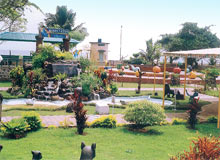
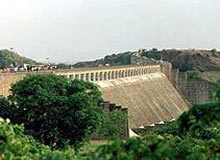
 Tourists go to visit places with the intention of discovering the city’s history, culture and location. To move on with the essence of the city lingers on even after one is back from the tour. While moving around in a new city, the people and the things around attract one’s attention. While returning from the tour the things bought during the tour remain as a souvenir. What to buy in Rajkot while touring can be an obvious question. To get the right thing at right price, the tourists must visit the local Bazaars in Rajkot.
Tourists go to visit places with the intention of discovering the city’s history, culture and location. To move on with the essence of the city lingers on even after one is back from the tour. While moving around in a new city, the people and the things around attract one’s attention. While returning from the tour the things bought during the tour remain as a souvenir. What to buy in Rajkot while touring can be an obvious question. To get the right thing at right price, the tourists must visit the local Bazaars in Rajkot.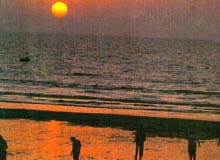
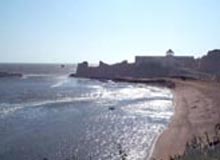
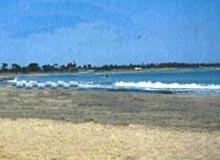 Daman and Diu boast of a number of enchanting beaches that have so far been overshadowed by the overwhelming popularity enjoyed by the beaches in Goa. However the beauty and appeal of the beaches in Diu could not be suppressed for long and today the beaches in Diu play a key role in boosting the importance of this place from the tourism point of view. Chakratirth Beach, Diu is one of the popular beaches in Diu.
Daman and Diu boast of a number of enchanting beaches that have so far been overshadowed by the overwhelming popularity enjoyed by the beaches in Goa. However the beauty and appeal of the beaches in Diu could not be suppressed for long and today the beaches in Diu play a key role in boosting the importance of this place from the tourism point of view. Chakratirth Beach, Diu is one of the popular beaches in Diu. 
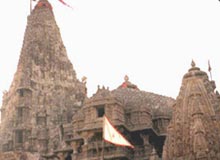 Introduction:
Introduction: 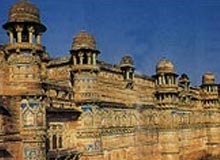 Introduction:
Introduction:











